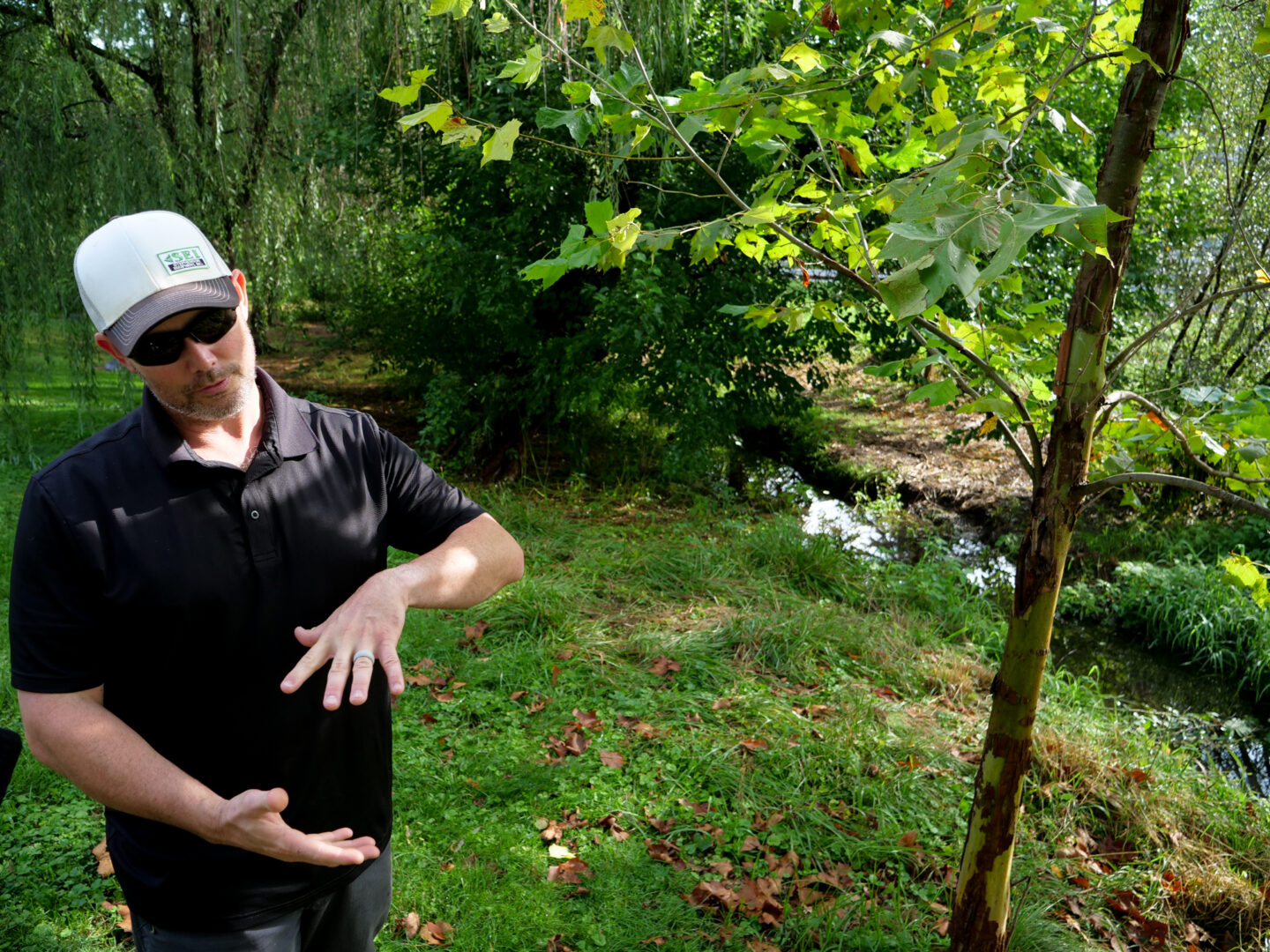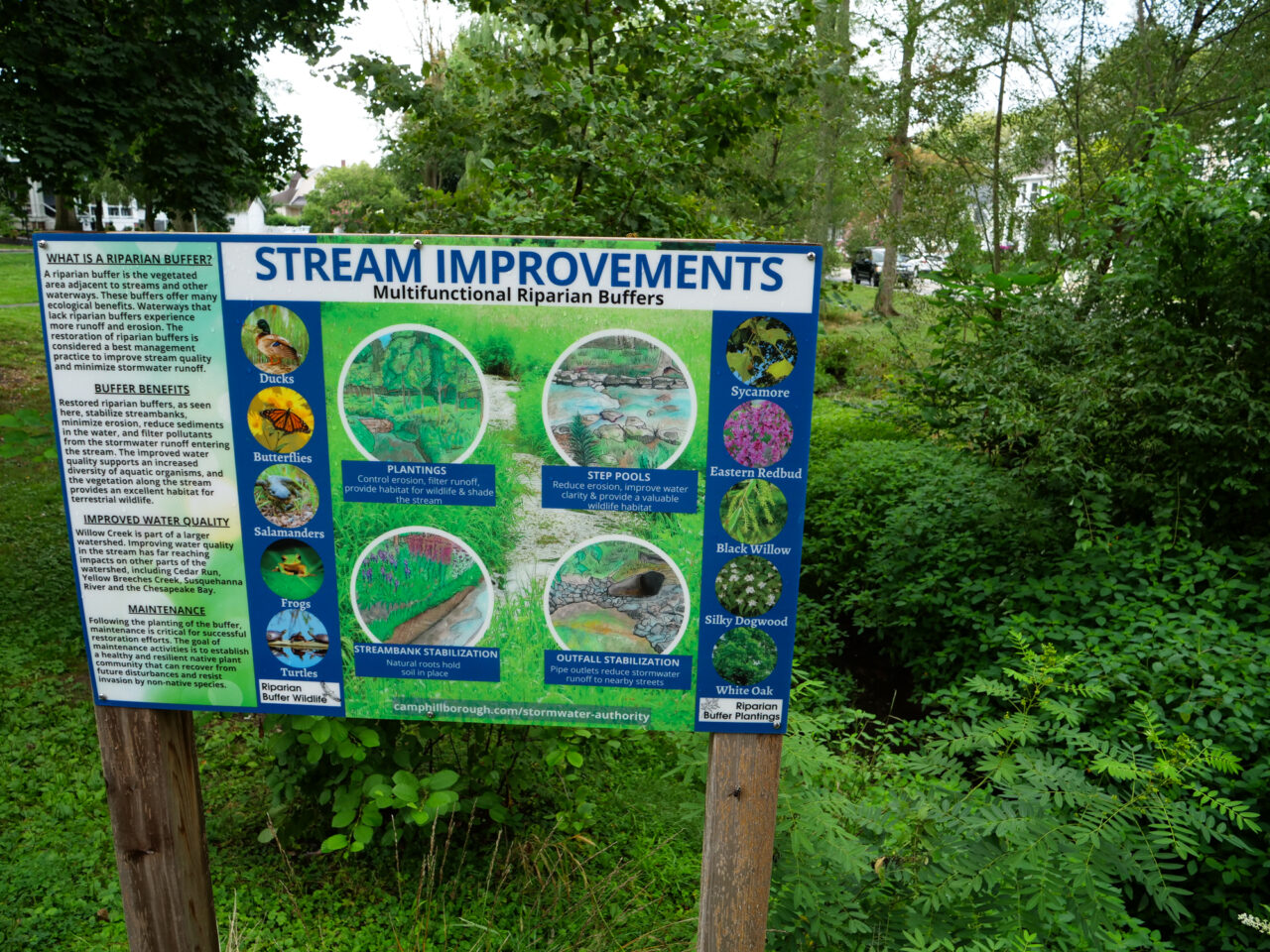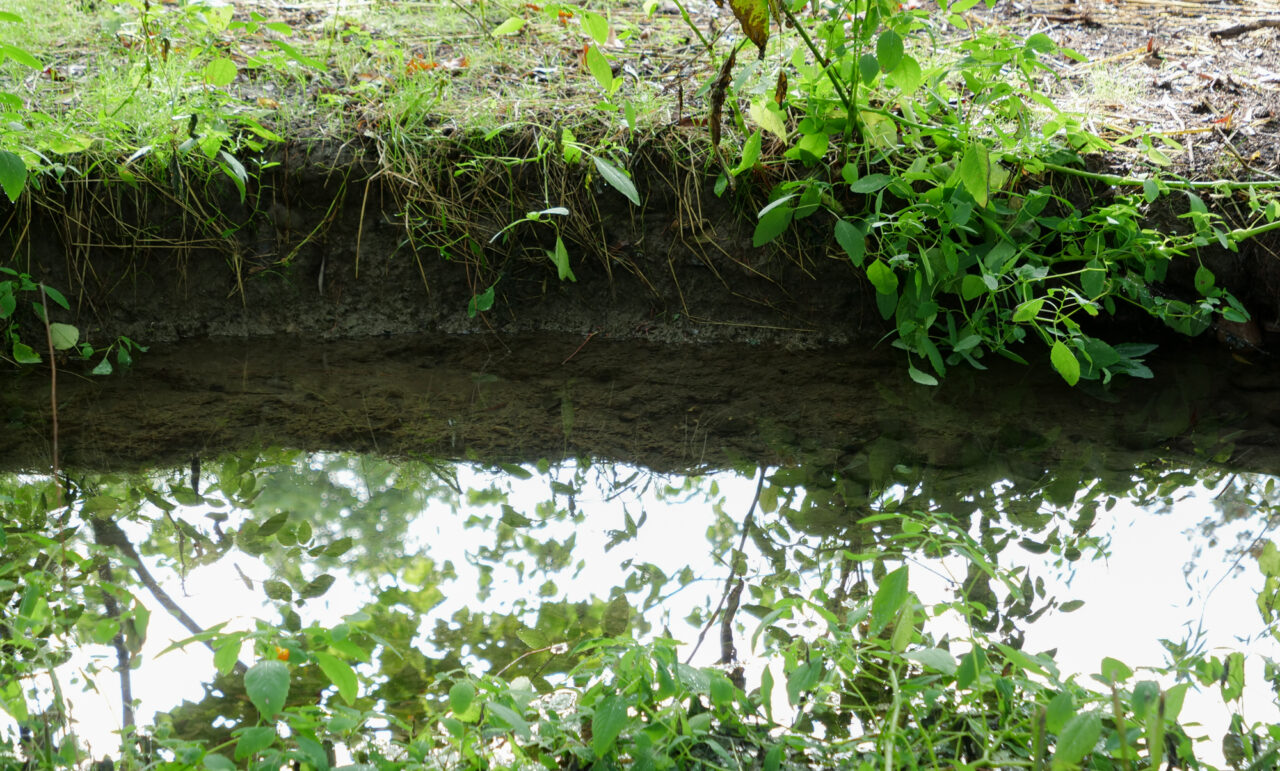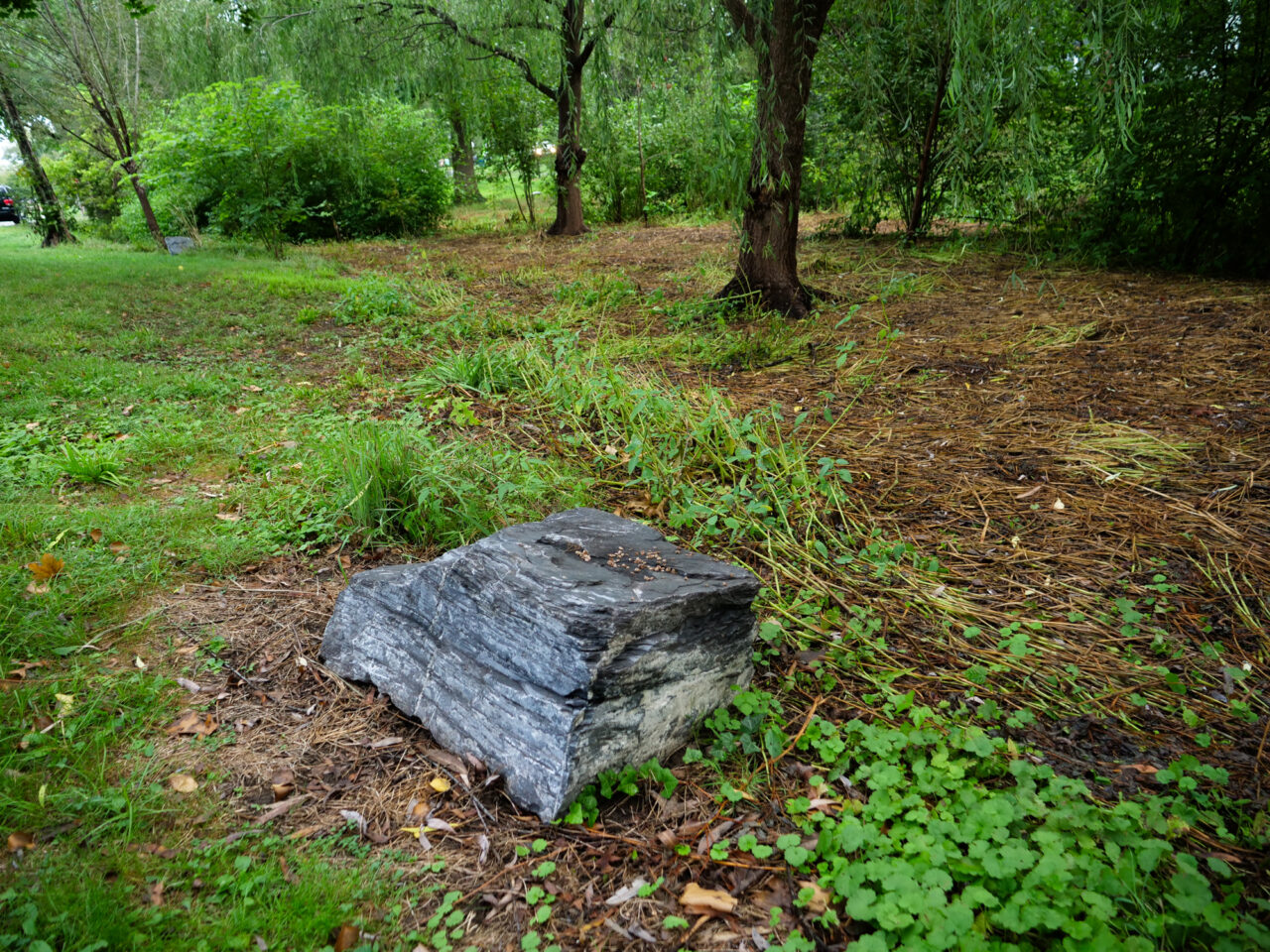
Lester Lanman, Camp Hill Borough public works director, talks about the riparian buffer the borough built along a stream in Willow Park in Camp Hill Borough on Tuesday, Aug. 15, 2023.
Jeremy Long / WITF


Lester Lanman, Camp Hill Borough public works director, talks about the riparian buffer the borough built along a stream in Willow Park in Camp Hill Borough on Tuesday, Aug. 15, 2023.
Jeremy Long / WITF

Jeremy Long / WITF
Lester Lanman, Camp Hill Borough public works director, talks about the riparian buffer the borough built along a stream in Willow Park in Camp Hill Borough on Tuesday, Aug. 15, 2023.
Food trucks, raffles, and live music may sound like what you’d find at a county fair, but in Camp Hill, they’re part of StormFest, where the borough hopes to teach people about watersheds, stormwater and the fees that come with it.
Joan Berst and her husband, John, were at the event on July 26 at the borough hall, and said they’re interested in the environment – but they’re not familiar with what stormwater fees pay for.
“On a scale of one to five, probably about a two, maybe three. Kinda low,” John Berst said.
Camp Hill’s fee went into effect in July 2020. Its budget this year expects the fees to bring in $640,000. Fees paid for installing closed-circuit television in the stormwater system to diagnose and monitor potential problems. And they have funded pipe repairs under several roads.
Listen to the story:
At StormFest, the borough invited members of its stormwater authority, as well as officials from other municipalities, to talk about projects their fees and programs support. Environmental groups and water experts were also there.
Andrew Hench, who lives in Camp Hill, said he was more familiar with stormwater after listening to a presentation from on-site engineers.

Jeremy Long / WITF
A sign in Willow Park explains the stormwater improvements in Camp Hill Borough.
One upcoming project the fees will pay for is a stream restoration at Siebert Park, estimated at $725,000. To understand what a project like that looks like, you can look at a similar one less than a mile down Walnut Street that was paid for with a DEP grant and borough funding before the fees went into place.
Willow Park is nestled in between two residential streets in the borough. Until 2019, it was mainly an open grass park, with a stream that was slowly eroding, sending sediment downstream.
Lester Lanham, director of public works, said the stream is fed by springs in the neighborhood, but also stormwater drains.
Because the bank was entirely grass, during heavy rain events, “[I]t just undercuts the whole thing and washes it out,” he said.
The borough added trees, native grasses and shrubs along the stream edge, called a riparian buffer, to stop the stream banks from washing away.
“There’s spots where it’s eroded pretty badly, and now that we have a buffer in place, it’s slowed that down a bit,” Lanham said.

Jeremy Long / WITF
Part of the stream bank in Willow Park is washed away in Camp Hill Borough in this photo taken Tuesday, Aug. 15, 2023.
Stormwater is the runoff from surfaces and fields when rain can’t soak into the ground. It eventually enters storm drains to be sent to the nearest waterway, taking with it contaminants like oil, salt, manure, and fertilizer.
The pollutants harm the water quality and ecosystems like the Chesapeake Bay. Recent federal and state mandates have set strict limits on the amount of contaminants like phosphorus, nitrogen, and sediment that municipalities can discharge into those waters.
On top of the pollution issue, many municipal stormwater systems are aging, and they weren’t designed to handle more stormwater from more frequent and heavier storms brought on by climate change. That can lead to more standing water, even floods, and property damage.
“So we have an infrastructure problem on top of a stormwater problem,” said Andy Yencha, a water resource educator at Penn State Extension.
Some projects can cost hundreds of thousands to millions of dollars. Given the cost, increased rainfall from climate change and pollution reduction mandates, municipalities are turning to stormwater fees to get projects done more quickly.
Yencha said at least 87 municipalities across Pennsylvania have a stormwater fee or something like one.
He says in general, the fee a property pays depends on how much space it has that prevents water from soaking into the ground.
Properties with more impervious areas – like roofs, parking lots, patios, and additional buildings – will typically pay more than properties with more access to green spaces.
Unlike taxes, which are assessed by property value, the fees reflect the contribution to stormwater and the services needed to manage it.

Jeremy Long / WITF
Rocks mark where borough employees mow and do not mow the riparian buffer in Willow Park in Camp Hill Borough.
Some communities tackle larger projects through collaborations. Susquehanna Township and Lower Paxton Township worked with Capital Region Water and PennDOT on stream restoration projects contracted with the company RES, which converted three streams to wetlands.
Hannah Kalk, senior program manager for RES, described the wetlands they restore in urban areas as kidneys, filtering out pollutants brought from stormwater. They can also alleviate flooding in downstream areas by decreasing the water volume through the wetlands.
“They’re actually pro-flood projects that result in controlled flooding just like controlled burn,” she said.
The three restorations cost a combined $2.5 million and are estimated to reduce sediment entering the Chesapeake Bay by 700,00-800,000 pounds per year. They were funded in part by stormwater fees collected by the townships.
The fees are sometimes opposed by community members, particularly those with larger properties with many impervious features, like parking lots and large buildings.
To try to stem opposition, East Pennsboro, Hanover, Camp Hill and Lower Allen Township all said they held an educational or public event before the fees were put in place. Rebecca Davis, public works director in Lower Allen, said they began their outreach campaigns six months ahead of their start.
“I can’t tell you we don’t still have people that complain,” she said. “There are people that are gonna complain. But I think a lot of our education really helped mitigate those complaints.”
Lower Allen renovated one stormwater system used to retain water after heavy rains in a community complex. It was previously a large, grass-covered basin that Davis said would hold water beyond 72 hours. Her department refitted it into what they call a bioretention basin, which incorporates native plants in the basin to absorb stormwater. Davis said it greatly reduced the amount of standing water after storm events, which decreases mosquito breeding grounds.
In Willow Park, Lanham said they have some people who say they preferred the park as it was.
“But we also have people that come to us when we mowed this, we had people – four or five phone calls from people that were like, ‘Please tell me you aren’t taking that away. We like the way that looks. We hear frogs in here now that we didn’t hear for a while. There are ducks that live in here.’ So it’s on both sides,” he said.
StateImpact Pennsylvania is a collaboration among WITF, WHYY, and the Allegheny Front. Reporters Reid Frazier, Rachel McDevitt and Susan Phillips cover the commonwealth’s energy economy. Read their reports on this site, and hear them on public radio stations across Pennsylvania.
(listed by story count)
StateImpact Pennsylvania is a collaboration among WITF, WHYY, and the Allegheny Front. Reporters Reid Frazier, Rachel McDevitt and Susan Phillips cover the commonwealth’s energy economy. Read their reports on this site, and hear them on public radio stations across Pennsylvania.
Climate Solutions, a collaboration of news organizations, educational institutions and a theater company, uses engagement, education and storytelling to help central Pennsylvanians toward climate change literacy, resilience and adaptation. Our work will amplify how people are finding solutions to the challenges presented by a warming world.